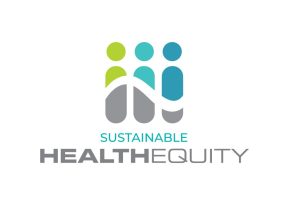IN A NUTSHELL Author's NoteThe Sustainable Health Equity Movement (SHEM) remains steadfast in advocating for sustainable equity as both the compass and the destination. By combining local resilience with global collaboration, we can ensure equitable access to shared resources while respecting planetary boundaries. On this fifth anniversary, we reaffirm our commitment to stay the course, knowing that achieving sustainable health equity is not optional—it is the only viable path toward a just, resilient, and thriving future in harmony with nature and all life forms in our shared planet

By Juan Garay
Founder and Co-chair of SHEM. Professor of Global health. Lead of the Valyter ecovillage. Valyter.es
By the same Author on PEAH: see HERE and HERE
Fifth Anniversary of SHEM
Keeping Up the Quest for Sustainable Health Equity
As we mark the fifth anniversary of the Sustainable Health Equity Movement (SHEM), the imperative to stay committed to the goal of sustainable equity has never been more urgent. Sustainability is at risk in every dimension of human life, and achieving equity is central to addressing these threats.
Environmental sustainability is under unprecedented strain: humanity is trespassing planetary boundaries, undermining the livelihoods and security of future generations. Biological sustainability is increasingly fragile, with humans exposed to radio-magnetic, physical, biological, and chemical threats largely beyond our control. Social sustainability is challenged by widespread mistrust in hierarchical structures—political, ideological, religious, and academic—and by the concentration of influence over communication in the hands of a few driven by narrow self-interest. A clear case is how most humans see with pain the genocide in Gaza and the tragic wars and suffering in Ukraine, Sudan and others with the UN and its anachronic security council blocking any global decision to end war and secure peace. These threats are compounded by self-destructive risks, including underregulated genetic engineering and nuclear confrontations.
Economic equity, which underpins all dimensions of wellbeing, continues to erode. Financial speculation increasingly dominates production and access to essential goods, reinforcing inequalities already skewed toward large-scale, centralized production. The disconnect between GDP and per capita income is widening, while political systems fail to define and protect a minimum dignity income threshold—leaving half of humanity living with less than what is feasible even with a fraction of global resources. Excessive accumulation by the wealthiest 10% further undermines both societal and environmental balance, without producing meaningful gains in wellbeing or life expectancy.
Health, and human wellbeing more broadly, is now declining—a historic first. Over 16 million deaths annually result from national inequities, with total mortality due to subnational inequities likely exceeding 20 million, approaching 40% of all deaths. Healthy life expectancy is stagnating or declining in some regions, where gains are achieved through unsustainable end-of-life healthcare, reduced wellbeing, institutional dependency, and increasing loneliness, particularly among older adults in high-income countries.
The connection between sustainability, equity, and wellbeing is clearer than ever, and the need to stay focused on sustainable equity as our guiding goal is increasingly urgent. Respecting planetary boundaries requires reducing production, trade, and consumption, prioritizing local scales while reserving global collaboration for shared public goods. Local dynamics foster inclusive sociocracy, participatory dialogue, and empathetic social relations—key factors in reducing loneliness, chronic stress, and chronic disease while enhancing holistic wellbeing. Localized economies also limit the scale of production and financial speculation dominated by few, mitigating inequity and its destructive impact on nature.
SHEM remains steadfast in advocating for this path: sustainable equity as both the compass and the destination. By combining local resilience with global collaboration, we can ensure equitable access to shared resources while respecting planetary boundaries. On this fifth anniversary, we reaffirm our commitment to stay the course, knowing that achieving sustainable health equity is not optional—it is the only viable path toward a just, resilient, and thriving future in harmony with nature and all life forms in our shared planet.
